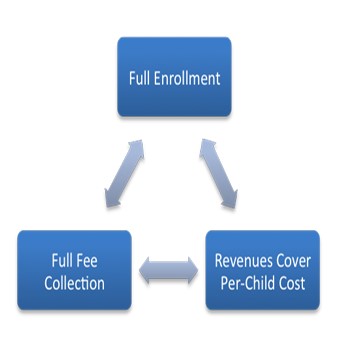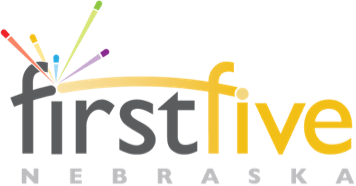Given the high prices parents pay for child care, it is often assumed that child care programs must be very profitable. However, this is almost never the case. In fact, just to break even, a program must operate consistently within the constraints of what child care business analysts call the “Iron Triangle.”
Developed by Louise Stoney (Alliance for Early Childhood Finance and Opportunities Exchange) and Libbie Poppick (Opportunities Exchange), the Iron Triangle refers to the three key metrics of financial viability in child care:
Full enrollment, every day in every classroom: Tuition paid by parents is the largest source of revenue for any child care business. If enrollment drops below the full capacity of a child care program, the provider begins to lose revenue. Even temporary fluctuations in enrollment—such as when a parent removes a child from a program—can reduce a provider’s earnings. The high rate of staff turnover can force providers to limit their enrollment for far longer periods, resulting in even more serious impacts on program revenues.
Collect tuition and fees, in full and on time: Child care providers must follow clear and consistent processes for billing promptly and collecting fees from families and the child care subsidy program. But even if these processes are in place, it is often difficult for providers to collect fees from parents who fall behind on their scheduled payments, as well as process the paperwork necessary to bill the state for services provided through the child care subsidy. Shortfalls and delays in fee collection are commonplace in child care, and have a huge impact on the cash flow necessary to operate a successful business.
Collect revenue that covers per-child cost: Child care providers can only break even if the cost for services per child is at least equal to the revenues. But even in the best of financial circumstances, the per-child cost is usually higher than what parents can easily afford to pay, and generally exceeds subsidy reimbursement rates. As the price of food, supplies and other operational expenses continue to increase, so too, does the gap between child care revenues and the per-child cost to deliver services.
Despite their best efforts, very few child care providers manage to adhere to the three key components of the “Iron Triangle.” In effect, many providers in Nebraska are operating at a deficit on a regular basis. This is not only bad news for the sustainability of individual child care programs, but on a broader scale, the sustainability of Nebraska businesses and stability of our economy.
LB318 eases financial burden for parents, child care providers
LB319 would help families, strengthen child care in Nebraska



